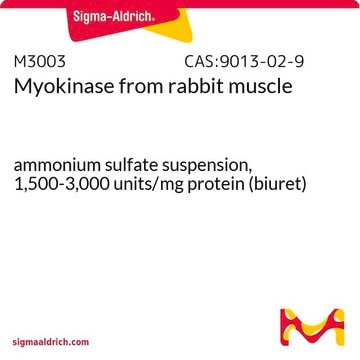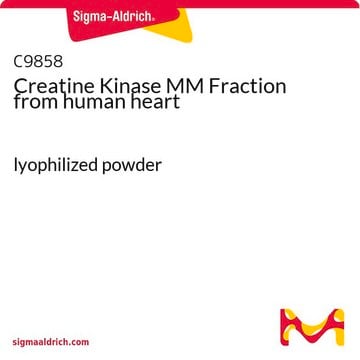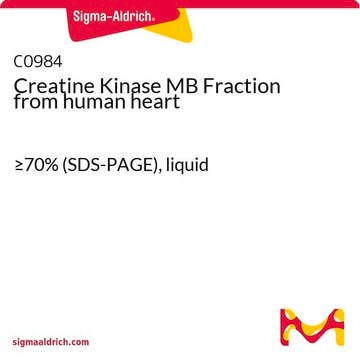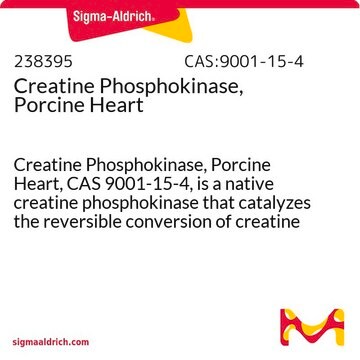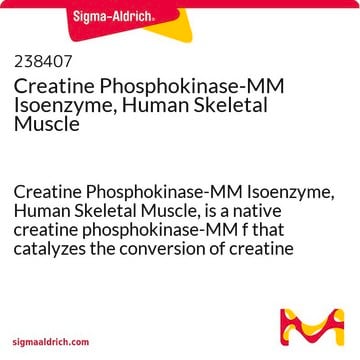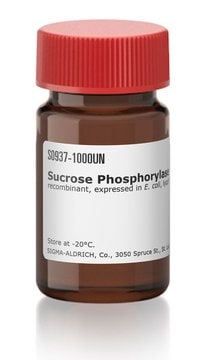CK-RO
Roche
Creatine Kinase (CK)
from rabbit muscle
Synonyme(s) :
creatine phosphokinase
About This Item
Produits recommandés
Source biologique
rabbit muscle
Niveau de qualité
Forme
lyophilized
Conditionnement
pkg of 100 mg (10127566001)
pkg of 500 mg (10736988001)
Fabricant/nom de marque
Roche
Couleur
white to light yellow
pH optimal
6.0-7.0(reverse reaction)
9.0(forward reaction)
Solubilité
water: soluble
Adéquation
suitable for immunoprecipitation
Numéro d'accès NCBI
Numéro d'accès UniProt
Application(s)
life science and biopharma
sample preparation
Activité étrangère
ATPase <0.001%
HK <0.001%
myokinase <0.001%
Température de stockage
2-8°C
Informations sur le gène
rabbit ... CKM(100009056)
Description générale
Application
Actions biochimiques/physiologiques
Qualité
Caractéristiques
Définition de l'unité
Forme physique
Notes préparatoires
Dissolve in 0.1 M imidazole buffer; aliquot and store at -15 to -25 °C.
Stable for approximately four weeks at -15 to -25 °C.
Avoid repeated freezing and thawing.
Dissolve in 0.5% NaHCO3 solution.
Do not freeze. Store protected from light.
Stable for 2 - 3 days, when stored at 2 to 8 °C.
Or
Dissolve in 30 mM glycine buffer, pH 9.0, with 0.2 mM DTT.
Stable for 2 - 3 days, when stored at 2 to 8 °C.
Autres remarques
Code de la classe de stockage
11 - Combustible Solids
Classe de danger pour l'eau (WGK)
WGK 1
Point d'éclair (°F)
does not flash
Point d'éclair (°C)
does not flash
Certificats d'analyse (COA)
Recherchez un Certificats d'analyse (COA) en saisissant le numéro de lot du produit. Les numéros de lot figurent sur l'étiquette du produit après les mots "Lot" ou "Batch".
Déjà en possession de ce produit ?
Retrouvez la documentation relative aux produits que vous avez récemment achetés dans la Bibliothèque de documents.
Les clients ont également consulté
Notre équipe de scientifiques dispose d'une expérience dans tous les secteurs de la recherche, notamment en sciences de la vie, science des matériaux, synthèse chimique, chromatographie, analyse et dans de nombreux autres domaines..
Contacter notre Service technique




